BODYBUILDING AND FAT LOSS Q&A WITH SEAN NALEWANYJ: PART 2
Hey guys, welcome to Part 2 of my new Bodybuilding And Fat Loss Q&A series, where I provide to-the-point, no B.S answers to your training, nutrition and supplementation questions.
There’s such a massive amount of misinformation circulating in the fitness industry these days, and it can often be a very difficult task trying to separate the fact from the fiction.
You can count on this Q&A as an honest, reliable source of information to apply to your muscle building or fat loss program, and there are a ton of useful tips that I’ll be outlining over the coming weeks.
Let’s get started…
(If you missed Part 1, you can click here to go back and access that post)
Q: Are squats really necessary in order to build big legs?
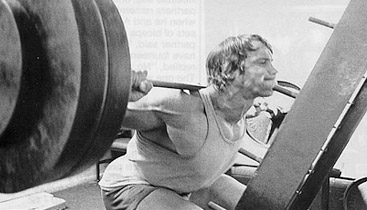
A: Despite the “hardcore” bodybuilding mentality that tries to treat squats as the be-all-end-all of effective lower body development, the simple truth is that it IS perfectly possible to build big, strong, impressively muscular legs without them.
Are squats a great exercise? Yes. Do I recommend that you perform them as part of your leg routine if you’re physically able to? Yes.
Overall, a basic barbell squat is probably the most productive lower body movement out there, and if your goal is maximumsize and strength gains, then they definitely should be included in your program.
However, that doesn’t mean there’s anything “magical” about squats, and it doesn’t mean they’re mandatory or that you can’t build big legs without them.
If you have an existing injury that prevents you from squatting, equipment limitations, or some other reason why you simply can’t or don’t want to perform them, it’s far from the end of the world as far as your leg training is concerned.
ANY exercise that places the targeted muscles under tension and that allows for progressive overload over time will still be an effective means of achieving muscular hypertrophy, and there are a ton of other lifts besides squats that can do that for you.
Leg presses (45 degree or horizontal, and done either both legs at a time or one-legged)… barbell and dumbbell lunges… barbell and dumbbell step-ups… leg extensions… these are all perfectly acceptable means of training your quads for increased size and strength and will produce very significant gains as long as sufficient intensity and volume are in place.
If it’s specifically back squats that you can’t perform, there are also an endless number of other effective variations to choose from there, including front squats, hack squats, dumbbell squats, split-squats, goblet squats and single-leg squats just to name a few.
Again, I’m not saying that squats aren’t a fantastic leg exercise, because they certainly are. However, to say that you can’t train your lower body effectively without them is just downright false.
Q: What is the best way to approach cheat meals as part of a complete bulking or cutting diet?
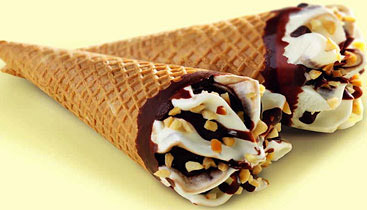
A: Given that proper muscle building and fat burning nutrition is all about the big picture, and given that a small amount of high fat/high sugar food is NOT going to negatively affect your results in any noticeable way in the first place, I really dislike the term “cheat meal” or “cheat food” and suggest that you simply eliminate it from your way of thinking when it comes to your diet.
“Cheating” implies that you’re doing something wrong or outside of the rules, and enjoying a slice of pizza (or 3) or a cookie (or 3) as part of an overall diet that is based primarily around minimally processed, nutrient dense foods is nothing of the sort.
Stop thinking about your diet in terms of individual food items, and start viewing it as one complete, overall package. Stop telling yourself that “this food is good” and “that food is bad”, because your body doesn’t see it like that anyway.
Your favorite “particularly-calorie-dense” foods should simply be looked at as one piece of your complete approach to eating, and as long as you include them in moderation it will literally have no noticeable effect on your bottom line results at the end of the day.
If you want an actual concrete figure to go by, the “10-20%/80-90%” approach is a good guideline to go by.
Simply put, this means that if 80-90% of your diet is based around high quality proteins, minimally refined carbs and healthy fats (and you’re getting in a couple servings of fruit and veggies each day as well), then the other 10-20% can come from whatever foods you’d like as long as it reasonably fits into your daily macronutrient totals.
Following a “flexible” approach to nutrition like this will make your life far more enjoyable day to day, and in my opinion, promotes a much healthier relationship with food as well.
Q: Do testosterone boosters really work, and if so, what is the best test boosting supplement available?
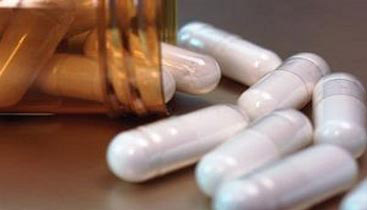
A: The simple answer is this…
If you currently have below average testosterone levels that have been brought on by a specific vitamin or mineral deficiency, then it is possible to use supplementation as a means of bringing yourself back into the normal range.
The 3 primary compounds of interest here would be zinc, magnesium and vitamin D3. Zinc and magnesium are depleted through sweat and hard-training gym goers often have low levels of each, while D3 is a vitamin that nearly everyone doesn’t get enough of. (For specific dosing info, see this post)
However, if you’re like most of the population and your testosterone levels are already within the normal range, then using natural supplements in an attempt to boost those levels into a supraphysiological range high enough to measurably increase muscle growth or fat loss is likely a complete waste of money.
There’s simply no evidence at all to suggest that traditional “test boosters” (such as tribulus, d-aspartic acid, avena sativa, longjack etc.) are of any real use for bodybuilding purposes, especially considering that testosterone levels need to be elevated by several hundred percent for any real increase in hypertrophy to take place.
The highest we’ve come is with d-aspartic acid, but even that will only yield a small 30-40% boost, still nowhere near large enough to produce measurable changes in body composition.
If you feel that the increase in libido that some of these compounds might produce improves your mood/motivation/energy levels in a way that positively impacts your training or other areas of your life, then that’s one thing and could have some practical application.
However, if you’re using them purely for their “testosterone boosting” properties, you’d be well-advised to save your cash and spend it elsewhere.
Q: What types of foods/meals should be eaten before and after cardio in order to maximize fat loss?
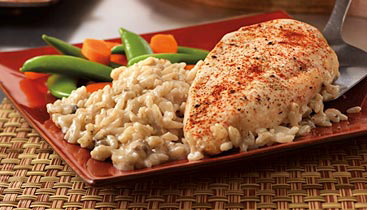
A: Within the context of a properly structured overall daily diet, the specific food items/meal combinations that you eat prior to and following your cardio sessions are really not something to concern yourself with.
Cardio should simply be viewed as an overall calorie-burning tool, and trying to manipulate the specific type of fuel that the body uses during the session (whether it be carbs or fat) through special pre and post cardio nutrition techniques is really just a waste of time and effort.
The body’s energy systems are extremely complex and dynamic, and since fat loss ultimately comes down to maintaining an ongoing calorie deficit in the big picture, there’s really no need to pre-occupy yourself with what takes place within small 30-45 minute windows a few times a week.
Just base this one on personal preference and go with whatever specific food combination, in whatever amount, and at whatever time period prior to your session allows you to perform at your best and feel most comfortable during your cardio workout.
Whether that’s a small shake, medium sized snack or even a large meal, it’s completely up to you.
As far as post cardio nutrition is concerned, the same thing applies. Finish your workout, and then just resume your regular eating plan by getting in any basic protein/carb combination that fits into your diet as a whole within a couple hours after the session is over.
Q: I’m having trouble eating enough throughout the day in order meet my calorie needs for muscle growth. Any tips?
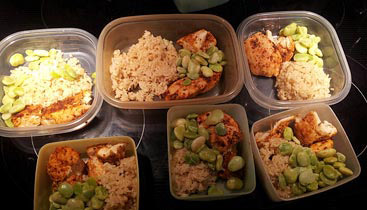
A: First off, if hitting your overall calorie needs for muscle growth is really posing that much of a challenge for you, I’d first recommend making sure that you aren’t going overboard on total food intake in the first place.
Your body can only build so much muscle in a given day, and a moderate calorie surplus of around 300-400 above maintenance is really all that’s needed to max out your hypertrophy potential anyway, not to mention that it will keep fat gains minimized.
However, assuming that your daily calories are in the right range and you’re still having issues with feeling full all the time, here are 3 quick tips you can employ to make things easier…
First off, experiment with different daily meal frequencies and meal layouts to find the one that maximizes your individual hunger, whether it be 3 large meals, 5 medium sized meals or 7 small meals. Everyone is different here and this alone can help quite a bit.
Secondly, add a homemade high calorie smoothie or two into your daily diet. Smoothies are a very easy way to consume a large number of healthy calories very quickly and easily, and using these in combination with whole foods will make it far easier to hit your calorie requirements.
And thirdly, make sure to include some more calorie-dense foods in your plan to go along with the typical “chicken/rice/veggie” bodybuilding-style meals you’re probably already eating.
Consuming lean/high quality proteins and high fiber carbs is certainly an important aspect of a well-rounded diet, but if you’re having trouble meeting your calorie needs without feeling sick to your stomach, you’ve got to mix in some higher calorie items as well.
There are a ton of possible options here, such as nuts, dried fruit, fruit juice, dark chocolate, healthy oils, fatty fish, granola bars etc.
Find some particularly high calorie foods that fit into your overall macronutrient needs for the day, combine those with the other regular meals you’re already eating, and hitting your calorie totals for the day really shouldn’t be too hard.
To make this even easier, don’t forget to employ that “10-20%/80-90%” principle I discussed earlier by also including a small amount of your favorite, dare I say it, “cheat foods”, to bump up your calorie totals even higher.
I hope you found these question and answers useful, and keep an eye out for Part 3 coming soon.
If you found this article helpful, make sure to sign up for your FREE custom fitness plan below...




